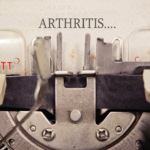To better understand the oligo PsA subtype, Olopoenia et al. used cross-sectional data from the 2019 National Health and Wellness Survey to determine features of patients with oliogoarthritis—defined as four or fewer joints involved—compared with those of patients with polyarticular disease—more than four joints—based on self reports; the study also involved comparisons with the general population (i.e., no psoriasis or PsA).
As the data indicate, patients with olioarticular arthritis differ from the general population in age, sex, smoking and use of alcohol among other features. Interestingly 44.4% of patients with oligo PsA were diagnosed by the primary care physician. A larger proportion of those with oligoarthritis were not treated than those with poly PsA (23.3% vs. 16.7%) and a smaller proportion was diagnosed by rheumatologists (23% vs. 40.7%). Importantly, despite the limited number of joints involved, the oligo PsA patients had lower health-related quality of life (QoL), as well as lower mental and physical functioning, work productivity and activity engagement compared with the general population.
These findings are interesting because they suggest the impact of arthritis reflects not just the number of joints involved, but the intensity and severity of joint involvement, as well as its impact on patient functioning.
Given the burden of comorbidities and the impact on QoL of the oligo population, it is surprising that so many patients with this form of PsA in this study were either not seen by a rheumatologist or received treatment. The gap of care of this patient population points directly to the need for more education on the heterogeneity of PsA for primary care providers as well as better referral for specialty care.
2. Ultrasound for PsA
Abstract 0746: Gutierrez Manjarrez et al.2
Ultrasonography is an increasingly popular imaging modality to evaluate arthritis, assess disease activity and develop biomarkers that may predict treatment response. For PsA, US is complicated because of the various findings associated with joint involvement. These findings include the following features: synovitis, peritenonitis, tenosynovitis, new bone formation (NBF), bone erosion and enthesitis from inflammatory or structural lesions.
Gutierrez Manjarrez and colleagues used ultrasound to evaluate 107 PsA patients to determine correlations with drug persistence, Disease Activity in PsA (DAPSA) change and DAPSA low disease activity (LDA) at three to six months after treatment. Among the relationships investigated, ultrasound synovitis and peritonitis showed the highest correlation with physician global assessment and swollen joint counts. The correlations with other ultrasound features were low.


